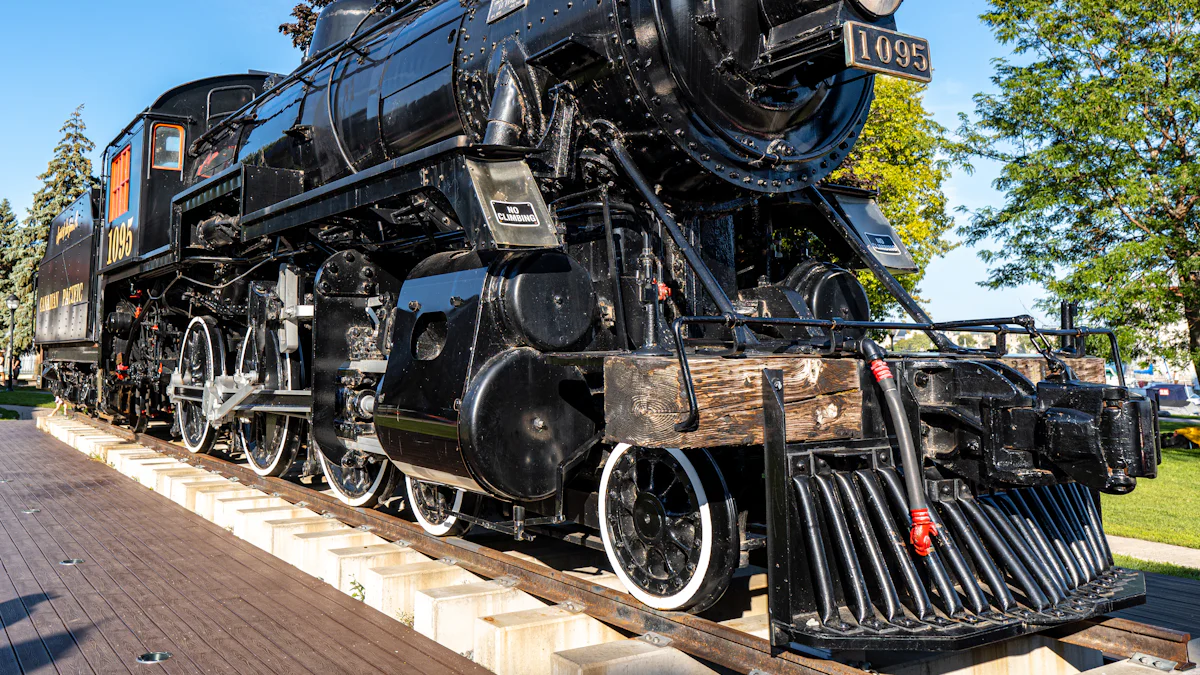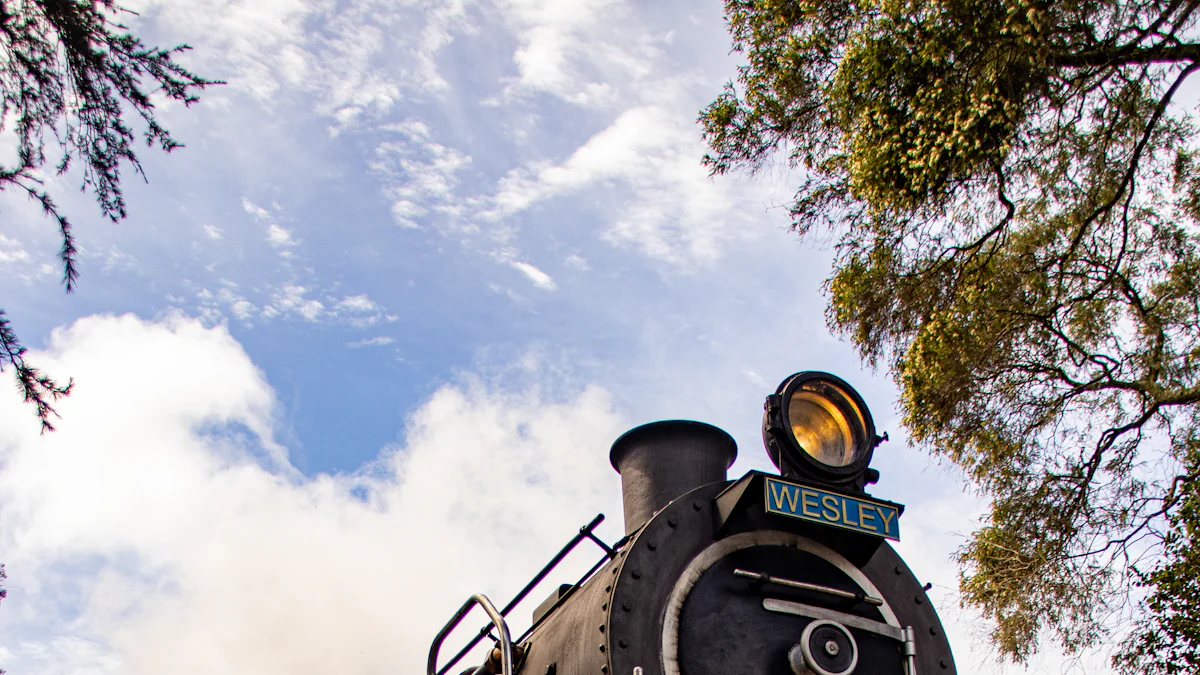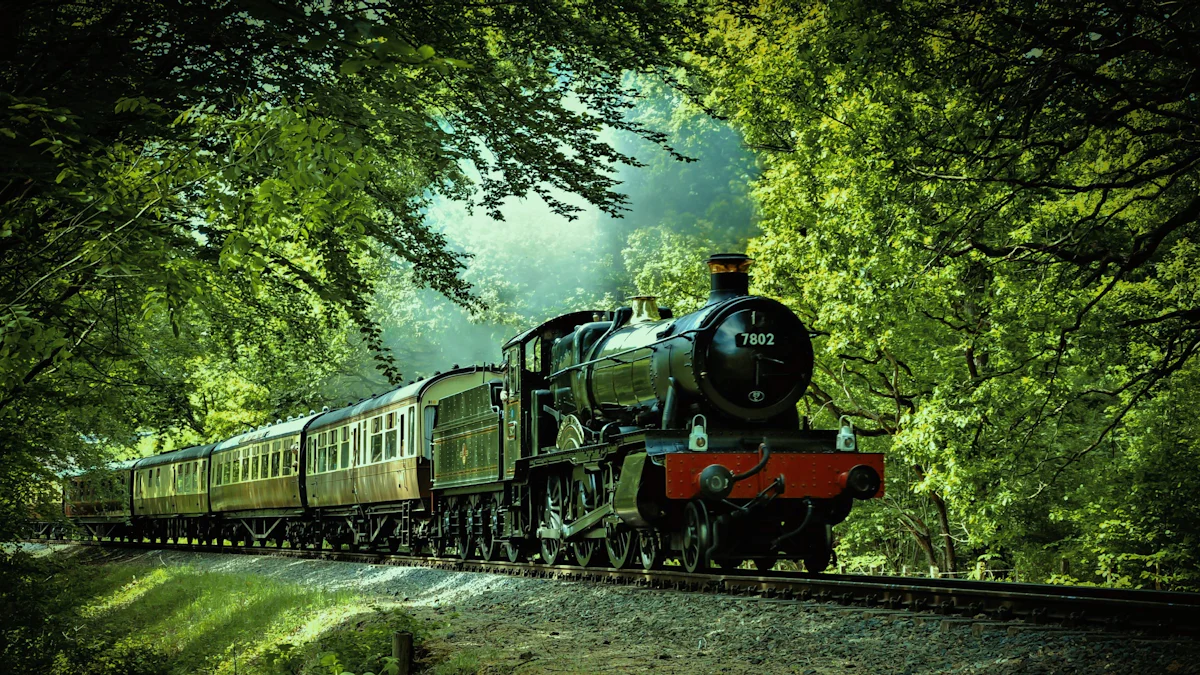Exploring the Legacy of the Nickel Plate Road

The Nickel Plate Road played a crucial role in shaping transportation across the Midwest. Its extensive network of railways connected towns and cities, facilitating trade and commerce. By installing numerous sidings along its route, the nickel plate directly served local businesses, which led to increased employment opportunities for residents. This railway system transformed the economy, allowing products to move efficiently from the East to the West. Preserving the history of the Nickel Plate Road is vital for future generations, as it reflects the rich heritage of American railroads and their lasting impact on communities.
Key Takeaways
The Nickel Plate Road changed travel in the Midwest. It linked cities and helped trade grow.
Local businesses grew because of the Nickel Plate's sidings. This created jobs and helped the economy.
Keeping the history of the Nickel Plate Road is important. It helps us understand American railroad history.
Today, projects like the Nickel Plate Express honor the railroad's past and involve the community.
Looking at resources from the Library of Congress can help you learn more about the Nickel Plate Road's effects.
Historical Overview

Origins and Formation
The Nickel Plate Road's history began with significant events that shaped its formation. The New York, Chicago and St. Louis Railway Company organized on February 3, 1881. The Seney Syndicate aimed to create a railroad connecting Cleveland to Chicago. On April 13, 1881, the company acquired the Buffalo, Cleveland and Chicago Railway. This acquisition allowed the Nickel Plate to run parallel to existing railroads. Construction of the Nickel Plate Road commenced along the surveyed route between Cleveland and Buffalo. By October 16, 1882, the mainline of 513 miles was complete.
Expansion and Growth
The Nickel Plate Road expanded rapidly after its formation. It connected Buffalo and Chicago in 1881, establishing a vital transportation link. In 1922, the Nickel Plate acquired the Lake Erie & Western and Toledo, St. Louis & Western railroads. This acquisition significantly broadened its network. The Lake Erie & Western connected Sandusky, Ohio, with East Peoria, Illinois, linking several key cities in Indiana. By the 1950s, the Nickel Plate Road had established connections with major railroads like the B&O, Pennsylvania, and New York Central. The impact of the Nickel Plate Road on regional development was profound, as it facilitated trade and commerce across the Midwest.
Decline and Transition
Several factors contributed to the decline of the Nickel Plate Road. Increased competition from trucks and highways diminished its freight business. Additionally, the rise of air travel reduced passenger demand. As a result, the Nickel Plate Road faced financial challenges. After its decline, many sections of the railroad transitioned to other uses. Some segments became trails for biking and walking, preserving the legacy of the Nickel Plate Road while serving the community in new ways.
Operational History
Management and Leadership
The management of the Nickel Plate Road featured several key figures who significantly influenced its operations. The Van Sweringen Brothers acquired the Nickel Plate Road in 1916. They proposed a new terminal in Cleveland and initiated grade separation projects to improve efficiency. John J. Bernet oversaw substantial growth during his tenure, doubling freight tonnage and enhancing operational efficiency. Frank Allen Brown served as assistant superintendent, contributing to management during the Chesapeake and Ohio Railway's control.
Strategic decisions shaped the Nickel Plate Road's operations. Vanderbilt attempted to undermine the Nickel Plate's reputation to force the Seney Syndicate into selling. In 1881, he recognized that allowing Gould to control the Nickel Plate would disrupt his monopoly on rail traffic. After acquiring the Nickel Plate for $7.2 million in 1882, Vanderbilt faced the challenge of keeping the railroad operational. His strategy led to fewer trains operating on the Nickel Plate, allowing for faster freight movement.
Equipment and Technology
The Nickel Plate Road utilized various locomotives and cars throughout its operational years. Notably, the railroad employed Berkshire-type steam locomotives, which improved speed and horsepower. The last steam locomotive, no. 765, remained operational until 1960, marking the end of the steam era. Subsequently, diesel locomotives, such as no. 358, replaced the steam fleet, highlighting the transition from steam to diesel power.
Technological advancements also played a crucial role in the Nickel Plate Road's operations. In 1944, the introduction of the Berkshire-type locomotive improved speed and horsepower for larger trains. The transition to dieselization in 1960 marked the end of steam locomotive service, reducing maintenance costs. The introduction of ALCO PA diesel-electric locomotives in 1947 represented a shift in design and technology.
Daily Operations
Typical schedules and routes defined the daily operations of the Nickel Plate Road. One prominent route connected Chicago, Cleveland, and Buffalo. In 1952, the travel time for this route was approximately 12 hours and 50 minutes eastbound and 13 hours and 5 minutes westbound. The Nickel Plate Limited operated from April 1929 until 1954, followed by the City of Chicago and City of Cleveland until 1965.
Crews faced various challenges while operating on the Nickel Plate Road. Maintaining schedules during adverse weather conditions proved difficult. Additionally, the need for efficient communication among crew members was essential for safe operations.
Cultural Impact

Community Connections
The Nickel Plate Road significantly influenced towns along its route. Many Ohio residents welcomed the railroad, as it promised to reduce high freight rates. The construction of the Nickel Plate Road was seen as a boon for cities, fostering economic growth. The Norwalk Chronicle even referred to it as a "double-track, nickel-plated railroad," highlighting its perceived value.
The railroad's presence led to several economic benefits for local businesses. For instance, the Nickel Plate installed sidings that created jobs and stimulated local economies. Cities like Norwalk and Bellevue competed for the railroad's routing, showcasing the urban development spurred by this vital transportation link.
Evidence | Description |
|---|---|
Economic Competition | The announcement of a new railroad line generated excitement among communities, leading to public subscriptions for rights-of-way. |
Local Business Support | The Nickel Plate Road installed sidings that created jobs and stimulated local economies. |
Urban Development | Cities like Norwalk and Bellevue competed for the railroad's routing, highlighting the economic benefits of the railroad. |
Personal Anecdotes
Former employees and local residents share fond memories of the Nickel Plate Road. One former employee reflected, “The NKP, in fact, that in 1951 brought my family to East Cleveland in the first place... It took two or three years for my parents to clean the place out... This, plus the fact that dad had a good paying job at UAW-unionized Towmotor, meant that our family could live a version of the idyllic American middle-class life of the 1950's.”
Residents also recall the excitement of living near the Nickel Plate Road. Each passing freight train served as a geography lesson, sparking curiosity about distant places. Many express nostalgia for the steam locomotives, which were later replaced by less interesting diesel trains.
Preservation Efforts
Current initiatives aim to preserve the history of the Nickel Plate Road. The Nickel Plate Express, which began operations in 2018, honors the railroad's legacy. This initiative has attracted thousands of passengers, showcasing the region's rich railroad heritage.
The Nickel Plate Road Historical & Technical Society (NKPHTS) plays a crucial role in preserving the railroad's history. This organization maintains an association of individuals interested in the Nickel Plate story. It supports preservation efforts through various programs, ensuring that the legacy of the Nickel Plate Road endures for future generations.
The Nickel Plate Road left a lasting impact on communities, particularly in East Cleveland. It shaped local culture and created cherished childhood memories. This railroad not only divided neighborhoods but also fostered a sense of nostalgia and adventure for those who lived nearby.
Honoring the history of the Nickel Plate Road is essential. Its construction in 1881 connected Buffalo and Chicago, establishing a vital transportation link. By the 1920s, it became a significant system in the Midwest, known for efficient service that facilitated trade.
For those interested in exploring local history and railroads, several resources are available:
The Library of Congress offers a guide on railroads, including books and serials for historical research.
It features maps, time tables, and images related to railroads.
The guide suggests incorporating oral histories from individuals with railroad experience.
Exploring these resources can deepen understanding of the Nickel Plate Road's legacy and its role in shaping regional development.
FAQ
What was the Nickel Plate Road known for?
The Nickel Plate Road was known for its high-speed service and efficient freight transport across the Midwest. It connected major cities like Cleveland and Chicago, significantly impacting regional trade and commerce.
How did the Nickel Plate Road influence Cleveland history?
The Nickel Plate Road played a vital role in Cleveland history by enhancing transportation links. It facilitated trade, attracted businesses, and contributed to the city's economic growth during the late 19th and early 20th centuries.
What types of trains operated on the Nickel Plate Road?
The Nickel Plate Road operated various trains, including passenger and freight services. Notably, it featured the Berkshire-type steam locomotives, which provided high-speed service and improved efficiency for transporting goods.
Are there any preservation efforts for the Nickel Plate Road?
Yes, several preservation efforts exist, including the Nickel Plate Express. This initiative honors the nickel plated railroad's legacy and promotes awareness of its historical significance through community engagement and educational programs.
How can I learn more about the Nickel Plate Road?
To learn more about the Nickel Plate Road, explore resources like the Library of Congress, which offers historical documents, maps, and oral histories. Local historical societies also provide valuable insights into the railroad's impact on communities.